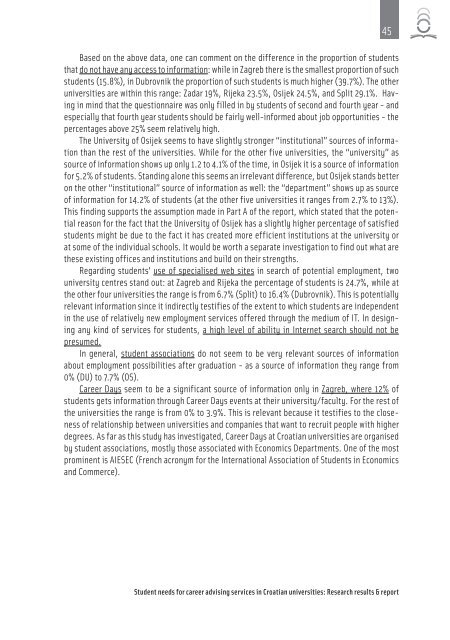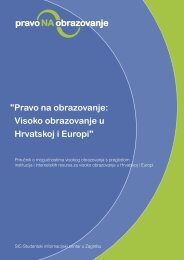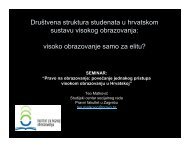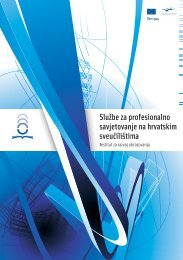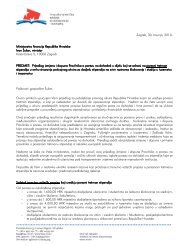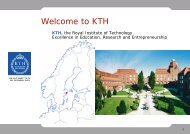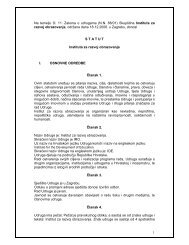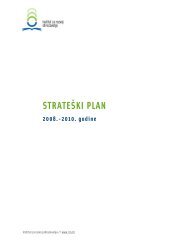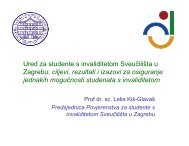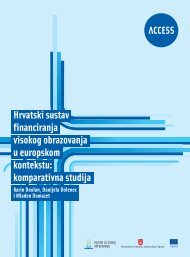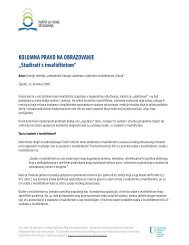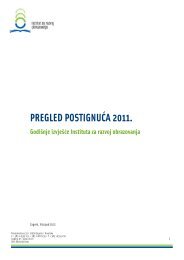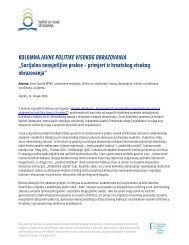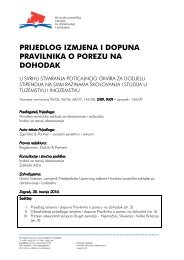Download handbook, PDF format (English) - Institut za razvoj ...
Download handbook, PDF format (English) - Institut za razvoj ...
Download handbook, PDF format (English) - Institut za razvoj ...
You also want an ePaper? Increase the reach of your titles
YUMPU automatically turns print PDFs into web optimized ePapers that Google loves.
Based on the above data, one can comment on the difference in the proportion of studentsthat do not have any access to in<strong>format</strong>ion: while in Zagreb there is the smallest proportion of suchstudents (15.8%), in Dubrovnik the proportion of such students is much higher (39.7%). The otheruniversities are within this range: Zadar 19%, Rijeka 23.5%, Osijek 24.5%, and Split 29.1%. Havingin mind that the questionnaire was only filled in by students of second and fourth year - andespecially that fourth year students should be fairly well-informed about job opportunities - thepercentages above 25% seem relatively high.The University of Osijek seems to have slightly stronger “institutional” sources of in<strong>format</strong>ionthan the rest of the universities. While for the other five universities, the “university” assource of in<strong>format</strong>ion shows up only 1.2 to 4.1% of the time, in Osijek it is a source of in<strong>format</strong>ionfor 5.2% of students. Standing alone this seems an irrelevant difference, but Osijek stands betteron the other “institutional” source of in<strong>format</strong>ion as well: the “department” shows up as sourceof in<strong>format</strong>ion for 14.2% of students (at the other five universities it ranges from 2.7% to 13%).This finding supports the assumption made in Part A of the report, which stated that the potentialreason for the fact that the University of Osijek has a slightly higher percentage of satisfiedstudents might be due to the fact it has created more efficient institutions at the university orat some of the individual schools. It would be worth a separate investigation to find out what arethese existing offices and institutions and build on their strengths.Regarding students’ use of specialised web sites in search of potential employment, twouniversity centres stand out: at Zagreb and Rijeka the percentage of students is 24.7%, while atthe other four universities the range is from 6.7% (Split) to 16.4% (Dubrovnik). This is potentiallyrelevant in<strong>format</strong>ion since it indirectly testifies of the extent to which students are independentin the use of relatively new employment services offered through the medium of IT. In designingany kind of services for students, a high level of ability in Internet search should not bepresumed.In general, student associations do not seem to be very relevant sources of in<strong>format</strong>ionabout employment possibilities after graduation - as a source of in<strong>format</strong>ion they range from0% (DU) to 7.7% (OS).Career Days seem to be a significant source of in<strong>format</strong>ion only in Zagreb, where 12% ofstudents gets in<strong>format</strong>ion through Career Days events at their university/faculty. For the rest ofthe universities the range is from 0% to 3.9%. This is relevant because it testifies to the closenessof relationship between universities and companies that want to recruit people with higherdegrees. As far as this study has investigated, Career Days at Croatian universities are organisedby student associations, mostly those associated with Economics Departments. One of the mostprominent is AIESEC (French acronym for the International Association of Students in Economicsand Commerce).45Student needs for career advising services in Croatian universities: Research results & report


